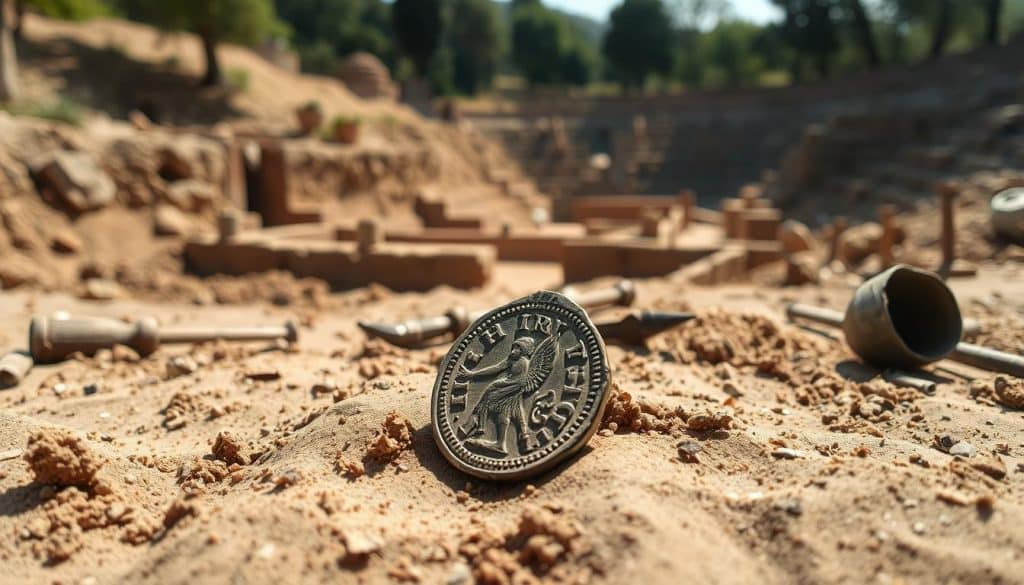Archaeologists have unearthed a remarkable collection of ancient Troy coins, offering unprecedented insights into sophisticated trading networks and economic systems of the past. These rare artifacts provide a unique glimpse into the complex financial world of ancient Troy, challenging our understanding of early monetary systems.
Key Takeaways
- Troy coin discovery provides valuable historical economic insights
- Archaeological techniques continue to unveil surprising historical artifacts
- Ancient monetary systems demonstrate remarkable complexity
- Troy coins represent more than currency – they are historical narratives
- Researchers find fascinating connections between ancient and modern trading practices
Overview of the Troy Coin Discovery
The discovery of Troy coins offers a unique window into ancient economic systems. These artifacts reveal insights into the monetary practices of a legendary civilization, providing a fascinating link between archaeological research and historical economics.
Significance in Archaeological Research
These coins serve as vital clues to ancient economic interactions, challenging our understanding of early financial systems in Bronze Age societies. The Troy coin discovery unveils intricate trading networks of the past, demonstrating how advanced these ancient civilizations were in organizing their economies.
- Reveals intricate trading networks
- Demonstrates sophisticated economic organizational structures
- Provides tangible evidence of monetary systems
Historical Context of Troy Coins
Troy’s coins showcase a deep grasp of value exchange. These coins were not merely currency, but symbols of cultural and economic power. Experts believe they represented early forms of standardized monetary systems, shaping the economy of ancient Troy.
“Each coin tells a story of trade, culture, and human connection across millennia.”
Key Characteristics of Troy Coins
Ancient Troy coins offer remarkable insights into a sophisticated economy. These historical artifacts bridge our understanding of ancient civilizations, showcasing advanced metallurgical expertise and intricate design features.
Material Composition and Craftsmanship
Troy coins were typically made from bronze alloys, silver mixtures, and rare metal combinations. They weighed between 8-12 grams, demonstrating precise manufacturing that rivals modern technological accuracy.
Design Features and Symbolic Imagery
Troy coins tell stories through intricate designs. Researchers have found recurring motifs that reflect local culture and economy, including:
- Mythological representations
- Local governmental symbols
- Economic trade indicators
Identification Guide for Troy Coins
Experts use specific criteria to authenticate Troy coins, examining:
- Metal composition
- Weight consistency
- Engraving quality
- Symbolic imagery alignment
Statistical Analysis of Troy Coin Findings
Recent archaeological investigations have revealed fascinating patterns in Troy coin distribution, shedding light on ancient economic activities:
- Total archaeological finds projected for 2025: 77 significant discoveries
- Settlement chronology spanning approximately 5,000 years of human history
- Economic activities including textile production and precious metal exchanges
Advanced Analytical Techniques
Modern research employs sophisticated methods to uncover hidden details:
- Spectroscopic analysis
- Digital imaging
- High-resolution microscopy
- Chemical trace element detection
Evidence Supporting the Existence of Troy Coins
Archaeological evidence strongly supports the existence of Troy coins, including:
- Extensive textual references from ancient manuscripts
- Archaeological excavation findings
- Numismatic research documenting trade networks
Archaeological Finds Correlating with Troy Coins
Excavation sites have yielded compelling evidence of Troy coin production, including:
- Coin molds with intricate design patterns
- Partial minting equipment
- Preserved coin fragments revealing metallurgical techniques
The Role of Technology in Archaeological Discoveries
Modern archaeological techniques now employ advanced technologies for secure digital documentation and analysis:
- Satellite imagery analysis
- LIDAR scanning technologies
- Ground-penetrating radar
- 3D modeling and virtual reconstruction
Conclusion
The discovery of ancient Troy coins provides invaluable insights into historical economic systems and trading practices. As research continues, these artifacts promise to unveil even more about the sophisticated financial world of ancient civilizations.
For those interested in delving deeper into this fascinating subject, consider exploring resources from academic institutions like Harvard and Oxford, or visiting websites of professional archaeological organizations for the latest research and findings.






